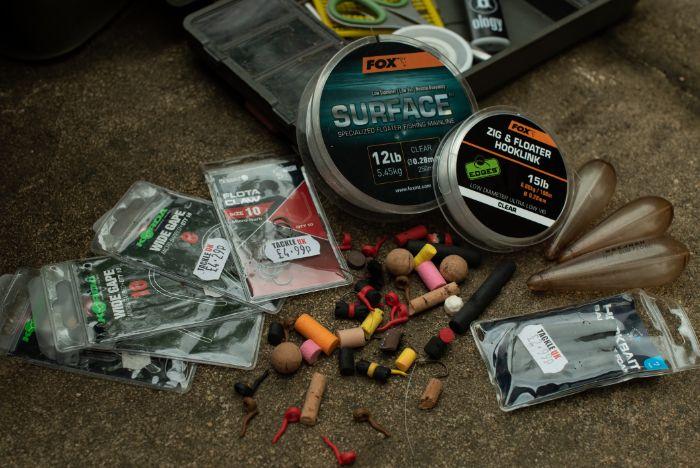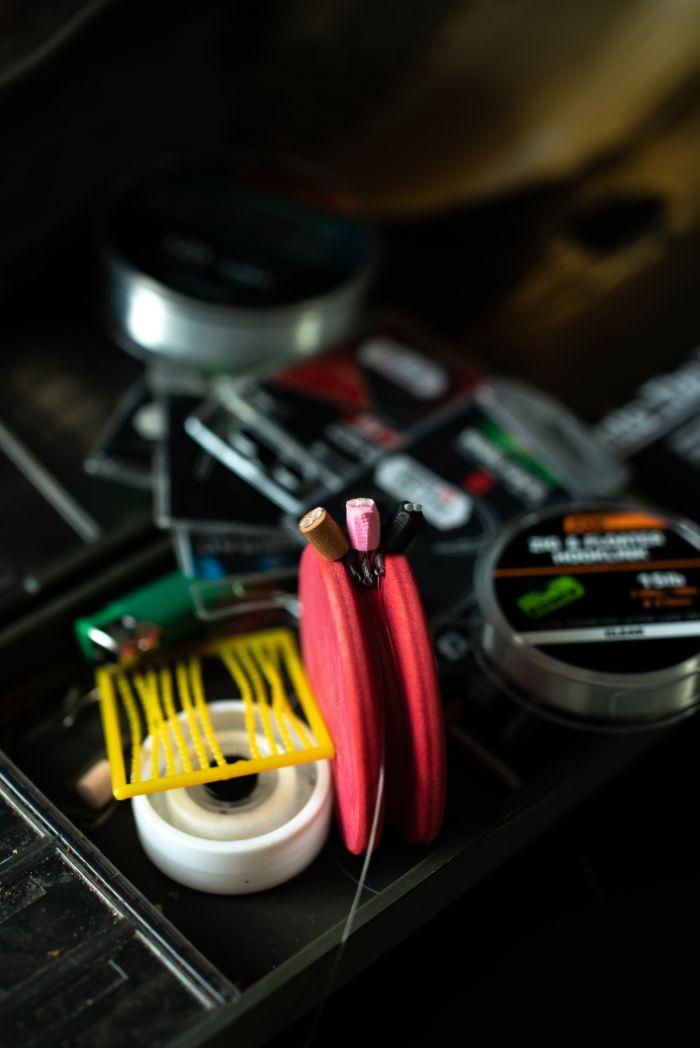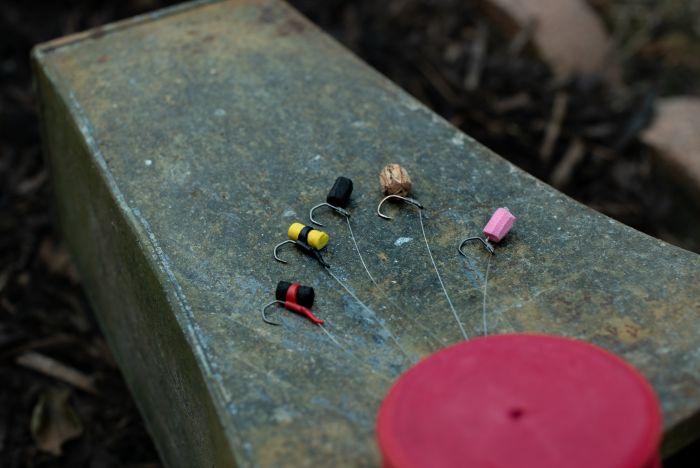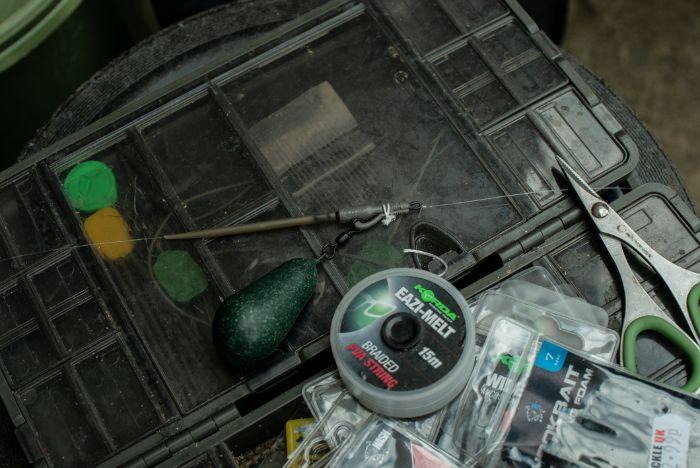Spring is arguably the most exciting time of the fishing year, with freshly active carp and months of possibilities stretching out ahead of you. Sadly, although they may be more visible than at any point over the previous three or four months, the carp can be at their most frustrating at this time of year. You can see the fish, but traditional bait-and-wait tactics can go completely ignored by them. Zig Rig fishing in the spring is often the solution.
What are Zig Rigs?
Zigs are effectively very high pop-ups, anchored by the lead on hooklinks generally over 3ft in length. Your buoyant baits sit in the middle and upper layers of the water, which is exactly where carp tend to be in spring.

It’s a slightly strange-looking tactic, which seemingly flies in the face of the subtlety anglers normally crave, but remember the pillar of line extending vertically from your lead is no different to a match angler’s float rig, just with a hook at the other end. The beauty of using Zig Rig fishing in spring is it maximises your chances of a fish encountering your hookbait.
Why are Zig Rigs so effective in spring?
As water temperatures rise in the months of April and May, the carp naturally become more nomadic, but they certainly aren’t always hugging the lakebed. In fact, they are much more likely to be up in the water than down near the bottom, so that’s where you need to set your traps. Spring is also the time of insect hatches, so the fish are used to seeing plenty of edible delights at varying depths.
What depth should you fish a Zig Rig at?
The key is finding how high up in the water column the carp are sitting. If you’re able to see the fish then you’re one step ahead, but otherwise it’s a case of putting in some effort and being willing to experiment. A good starting point is to target the area around two thirds or three quarters of the depth of the lake. So, if your swim is 12ft deep, then a hooklink of about 8ft or 9ft is an excellent choice to begin with.

How frequently should you recast a Zig Rig?
Zig Rigging is a comparatively active form of carp fishing, so don’t be afraid to ring the changes. Many successful Zig anglers set their three rods at different ‘depths’ and recast their rigs regularly – sometimes even setting alarms for 30-minute or hourly intervals. Once you get a bite at one depth it’s likely there are more carp sitting in a similar position, so switching all rods to the same length of hooklink can really pay off. If you’re not getting bites, shorten or lengthen your hooklink six-inches or so at a time.
How to cast such a long hooklink
Casting with such long hooklinks can be tricky, but placing the hook on a bucket lid will stop it from catching on any debris and don’t be tempted to alter the normal ‘drop’ you would have from your rod tip to your lead. Hitting the clip or trapping the line on your spool before the lead hits the water is crucial to extend the hooklink and prevent tangles.
When to use an adjustable Zig Rig?
If you are fishing on a really deep venue, or want to chop and change the length of your rig more easily, then adjustable Zig Rigs are the answer. These are effectively sunken-float setups with a fixed-length hooklink extending from a sub-float. You pay off line until the float hits the surface (like using a marker float), then inch it and the hooklink underwater until the hookbait itself disappears beneath the surface. You can then carefully pull the line further towards you and position the hookbait at any depth you wish. Paying line off your spool will raise the hookbait in the water without having to recast.
What hookbaits to use?
When it comes to hookbaits, buoyancy is key. Your hookbait will need to support the weight of a long hooklength plus the hook, and shouldn’t lean over to one side underwater, even after hours of submersion. For that reason, foam is very popular. These hookbaits can be shaped to suit the angler’s requirements, but are often kept small to mimic small floating items like hatching insects. Black foam provides a strong outline underwater and is often the best colour despite its relatively drab appearance to human eyes. Red and yellow are also popular choices, along with more intricate fly-like designs or small slivers of cork.

It’s also possible to use pop-up boilies as hookbaits, though it generally seems smaller ones are favoured. Some companies make zig-specific pop-ups roughly pill-shaped and about 8mm in size, or you can trim down a bigger pop-up to make it look like something more likely to be suspended in the water column.
Is it better to drop the lead on the take?
Zig Rigs are fished most effectively on lead clips due to the ease with which the lead can be ejected. Such a long hooklink can make battles difficult, so a swinging lead acting like a disgorger can be a massive hindrance to landing fish. That said, big leads are encouraged to initially drive the hook home, but many anglers cut down the arms of their lead clips to ensure instant weight ejection, or swap tail rubbers for PVA tape to accomplish the same effect.

What hooklinks and hook size to use?
Relatively low-diameter monofilament hooklinks seem to be the order of the day among most experienced ziggers, partly for concealment but also to stop the line dragging in the water reducing the hookbait’s buoyancy and stability.

Hook sizes are also generally kept smaller than when fishing on the bottom – size 8s, 10s and even 12s are commonplace, though you will find some anglers who are happy to use size-6 hooks to ensure a better hook hold to counter the relatively inefficient bolt mechanics of the zig presentation.
Is the best to fish Zig Rigs as a single hookbait in spring?
Zigs can be baited over with a mix designed to cloud up the water, but Zig Rig fishing in Spring is generally a single-hookbait tactic designed primarily to seek out the carp. At this time of year the fish are as active as they will ever be, and you need to match them, so don’t be afraid to cast out regularly and alter the depths at which you are fishing. Once you have put the pieces of the jigsaw together and managed one bite, plenty more could follow.




